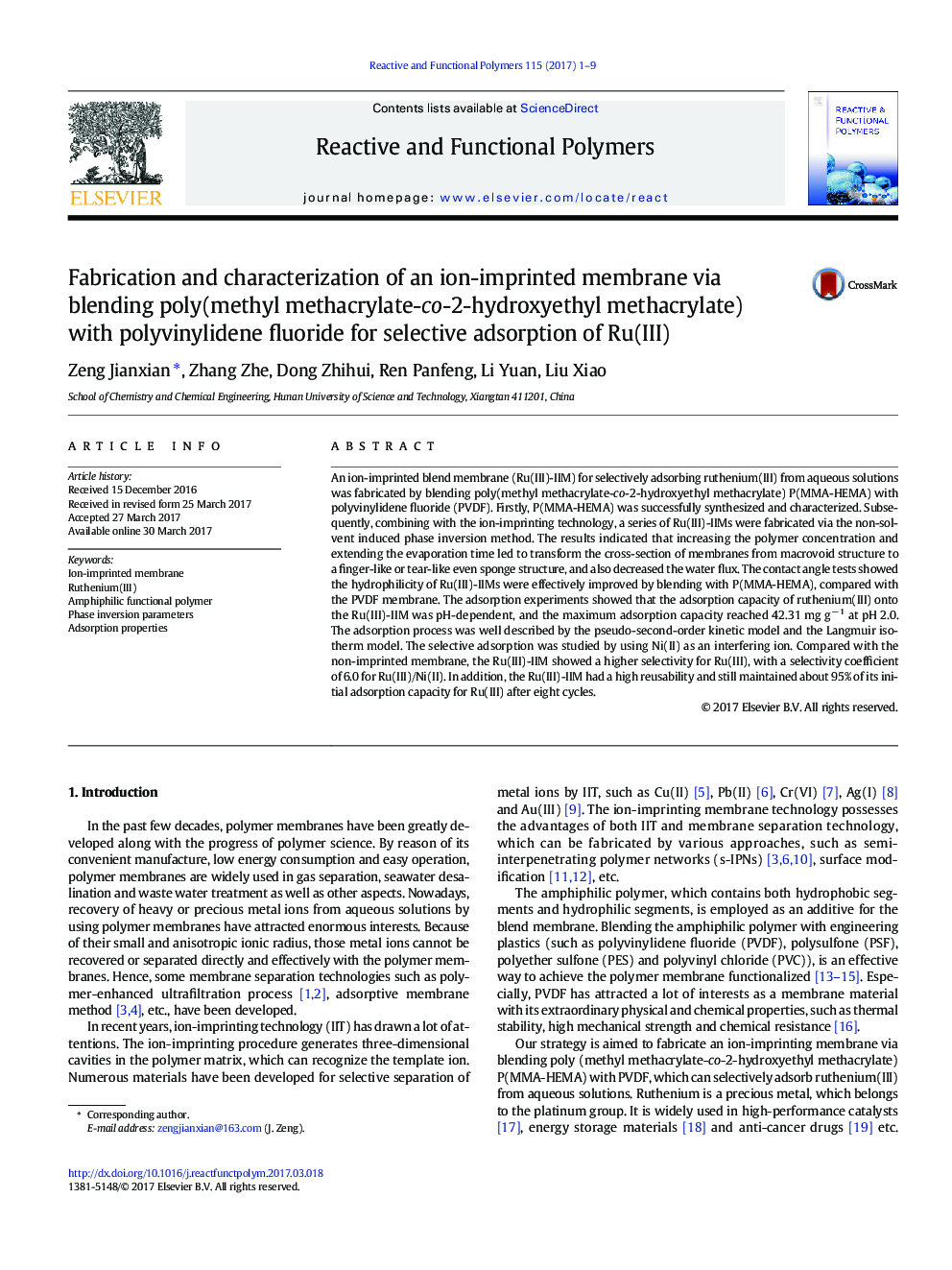| Article ID | Journal | Published Year | Pages | File Type |
|---|---|---|---|---|
| 5209343 | Reactive and Functional Polymers | 2017 | 9 Pages |
An ion-imprinted blend membrane (Ru(III)-IIM) for selectively adsorbing ruthenium(III) from aqueous solutions was fabricated by blending poly(methyl methacrylate-co-2-hydroxyethyl methacrylate) P(MMA-HEMA) with polyvinylidene fluoride (PVDF). Firstly, P(MMA-HEMA) was successfully synthesized and characterized. Subsequently, combining with the ion-imprinting technology, a series of Ru(III)-IIMs were fabricated via the non-solvent induced phase inversion method. The results indicated that increasing the polymer concentration and extending the evaporation time led to transform the cross-section of membranes from macrovoid structure to a finger-like or tear-like even sponge structure, and also decreased the water flux. The contact angle tests showed the hydrophilicity of Ru(III)-IIMs were effectively improved by blending with P(MMA-HEMA), compared with the PVDF membrane. The adsorption experiments showed that the adsorption capacity of ruthenium(III) onto the Ru(III)-IIM was pH-dependent, and the maximum adsorption capacity reached 42.31 mg gâ 1 at pH 2.0. The adsorption process was well described by the pseudo-second-order kinetic model and the Langmuir isotherm model. The selective adsorption was studied by using Ni(II) as an interfering ion. Compared with the non-imprinted membrane, the Ru(III)-IIM showed a higher selectivity for Ru(III), with a selectivity coefficient of 6.0 for Ru(III)/Ni(II). In addition, the Ru(III)-IIM had a high reusability and still maintained about 95% of its initial adsorption capacity for Ru(III) after eight cycles.
